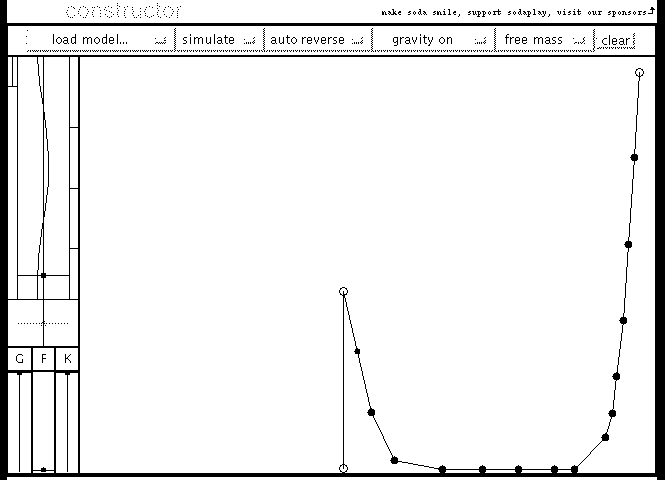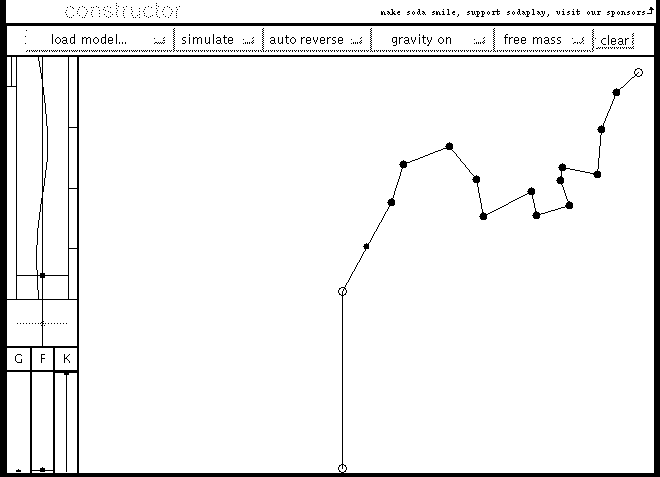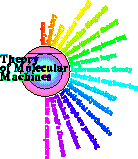
Sodaplay is an innovative java demonstration of simple physics.
I set up the following situation:

The friction is low or zero so that the string of masses (closed circles) bounces around. There are three fixed masses (open circles). One fixed mass is on a post in the middle and another is high up in the right upper corner. (Actually the third one at the bottom doesn't matter.) By setting the gravity (G) high the string of point masses will fall down as a chain. The first segment has a muscle (small dot), but this is overcome by the gravity.

In this image I have turned gravity off. The muscle pulls and pushes, making random pulses into the string. The net result is that the string "contracts". This is the most likely situation for the string. Even if you grab one of the free masses and pull it around the string will contract again when you let go. Indeed, this is the mechanism that rubber bands use! If you heat a rubber band it will contract because the molecules go into a higher entropy state (more disorganized) but the constraints force them to pull on each other, just as in this model. (People have even built little motors based on this principle, using sunlight to heat the rubber bands.)
My models:
 Turn on Select/Move and then
grab the point and give it a tug.
Switch to loose springyness to see what happens when the particles are unconnected:
they spread out. Then switch back to tight springyness
to see them condense.
Turn on Select/Move and then
grab the point and give it a tug.
Switch to loose springyness to see what happens when the particles are unconnected:
they spread out. Then switch back to tight springyness
to see them condense.
 Change the tightness to see the connected particles spread out (no connection)
or become condensed.
One of the links is longer than the others.
Can you spot it?
Change the tightness to see the connected particles spread out (no connection)
or become condensed.
One of the links is longer than the others.
Can you spot it?
 Unlike the previous models, this one has
about 30 links evenly spaced.
Pull on a link to start it moving. Then switch to loose springyness
to make the links irrelevant.
You will see the points spread out. Then switch back to tight
springyness to see it collapse
Unlike the previous models, this one has
about 30 links evenly spaced.
Pull on a link to start it moving. Then switch to loose springyness
to make the links irrelevant.
You will see the points spread out. Then switch back to tight
springyness to see it collapse
See also:
![]()

Schneider Lab
origin: 2000 Apr 20
updated: 2010 Mar 04
![]()